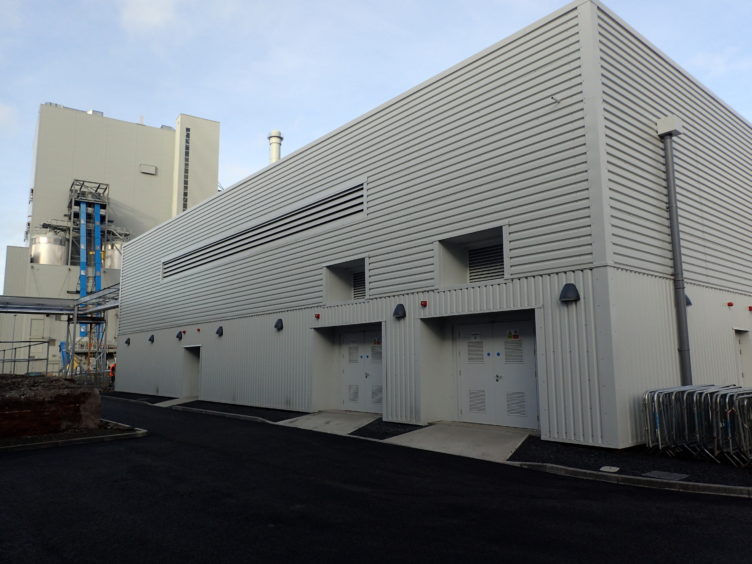
Heat still accounts for a large proportion of Scotland’s harmful emissions. It is therefore no surprise that the Scottish Government, which has been on the front foot on the climate change journey, has set rigorous targets to reduce the reliance on non-electrical heat sources.
By 2020, Scottish Government aims to have 11% of non-electrical heat demand met by renewable sources. By 2032, its target is to have 35% of heat for domestic buildings and 70% of heat and cooling for non-domestic buildings supplied using low carbon technologies, where technically feasible.
This is in the wider context of the call from the Committee for Climate Change for Scotland to aim for net-zero greenhouse gas emissions by 2045 (five years earlier the rest of the UK, given Scotland’s greater capacity to switch to renewables).
The demand for viable environmentally conscious alternative heating options is heating up.
One way of increasing the use of low carbon heat is through heat networks which deliver heat from single or multiple energy sources to a number of buildings. Heat can come from various low carbon sources such as recovered heat from industrial processes, renewable technologies such as heat pumps, biomass, solar thermal and anaerobic digestion.
While the majority of UK homeowners get their heat from individual boilers, Danish neighbourhoods, by comparison, have heat delivered by hot water piped to their houses via heat networks. This is because Denmark invested heavily in renewables, energy efficiency and district heating following the country’s oil crisis in 1973.
Could the current cultural, environmental and regulatory shift, such as the Chancellor’s recent announcement that installing gas boilers in new homes will be banned from 2025, be the UK’s catalyst for a shift in how it fulfils its heating requirements? Indeed, there is potential for a wider impact. With an estimated 1.6million boilers in the UK being replaced each year there are opportunities to retrofit district heat networks – particularly for areas of high-density housing such as multi storey blocks.
A key reason that district heat networks are beneficial is that they can utilise a range of renewable energy sources and heat that would otherwise be wasted. The surplus heat produced by electricity generating stations, factories and public transport networks can be captured and funnelled into the network, eliminating waste, lowering carbon emissions, lowering fuel consumption and saving everybody money. It sounds like a no brainer.
The challenge to adoption however is in the nature of the networks themselves – they typically involve multiple parties and need a sponsor who can invest for the long-term. So, while in theory they offer a great cost-effective way to decarbonise heat in towns and cities, making such projects a reality requires a champion to make it happen. In the UK heat networks initiatives are therefore often sponsored by local authorities, social housing providers or urban regeneration projects.
WSP was recently involved in helping deliver Scotland’s first 100% renewable, large-scale district heating network in Glenrothes in Fife. It came about on the back of a desire from Fife Council and RWE to protect an investment in a biomass combined heat and power (CHP) station that was built five years ago to power a paper mill, which had subsequently closed.
WSP’s feasibility study supported the business case for the new Glenrothes Energy Network to use surplus heat from the biomass CHP station for the benefit of the community. The project was able to secure a grant from the Scottish Government’s Low Carbon Infrastructure Transition Programme to fund £8.6M of the £24M project.
Council buildings are already connected to the network and it’s expected that once other businesses and homes are connected in the coming years, they will save at least 10% compared to the cost of heating with gas boilers. This is particularly relevant given that 30% of Glenrothes households live in fuel poverty (higher than the national figure for Scotland of 25%). In future, and if supported by additional infrastructure, this network has the potential to heat 3,500 homes – making it the largest renewable district heating schemes in Scotland.
This example is one of many innovative heat network projects that are underway across Scotland. However, such projects are still the exception rather than the norm – heat networks provide just 2% of the overall UK heat demand across the domestic, public, industrial and commercial sectors. There is clearly a fantastic opportunity to extend this. We are already seeing more forward-thinking property developers looking into such solutions.
There will always be a demand for heat. We need to make sure that the demand is met with considerations for carbon efficiency as well as cost effectiveness – reducing waste while also increasing energy security through diversification of sources. The foundations are in place to achieve net-zero goals, but we need to accelerate action through rolling-out proven solutions like heat networks to make it a reality.
Ewan Jures, Associate, WSP
WSP is an engineering professional services consulting firm.
